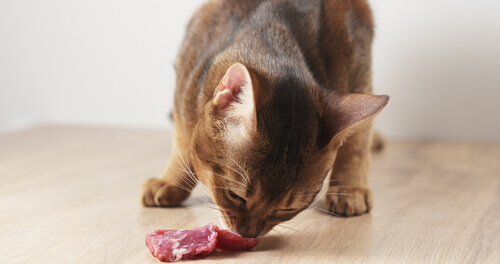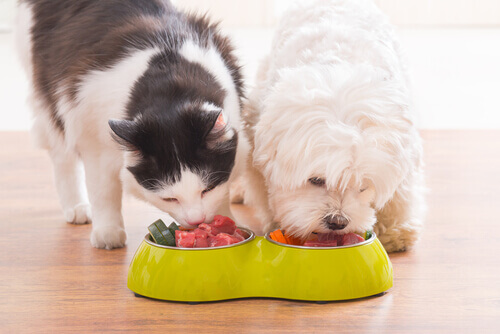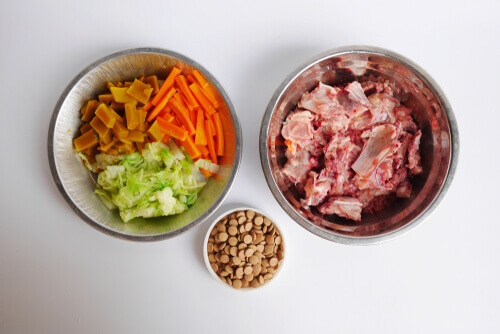Description and Characteristics of the BARF Diet for Cats

The BARF diet for cats is slowly becoming more and more popular. In fact, it has many adherents already. This is because many cat lovers consider it one of the most suitable diets for the health of their feline companions.
What is the BARF diet for cats?
BARF stands for Biologically Appropriate Raw Food and consists of meat, fruit, and vegetables.
This diet was created by Ian Billinghurst, an Australian veterinarian who was convinced that this diet is indeed the best one for pets. He originally conceived it for dogs, so it’s based on the origin of the domestic dog and the diet of their ancestor, the wolf.
The domestication of cats has been less pronounced, and it’s still possible to see behavior similar to that of the wildcat and other wild cats in them. In fact, it’s hard to tell some breeds apart from these animals. This is why the BARF diet for cats makes as much sense as its equivalent one for dogs.

Usually, people opt for BARF diets for cats in response to their distrust of commercial food. While it’s true that there’s currently high-quality commercial cat food available, it’s actually more cost-effective and tastier to use this raw diet for cats. It’s actually a great way to treat obesity and other food-borne diseases in these animals.
The ingredients of the BARF diet for cats
There are many homemade recipes for cats that adhere to this philosophy. The ratio is 80% raw meat, based mainly on muscle meat (70%) and raw edible bone (10%). 7% of the diet should be vegetables, 5% liver, 5% of other organs, 2% seeds and nuts, and 1% fruit.
The BARF diet is based on raw food so there’s a very slight risk of salmonella. Don’t use pork and always use previously frozen meats.
An alternative to raw meat, which many believe dangerous, is to cook food lightly. It goes against the principles of the BARF diet though. Some pet guardians are concerned about disease or parasites but they must keep in mind that these animals’ immune systems are a lot stronger than a human’s.
There are definitely parasites that they could catch through the ingestion of raw meat and, although veterinary inspections greatly reduce the risks, most veterinarians recommend not giving raw meat to pets. Do keep in mind that they mainly do so to reduce liability.

A suggested recipe
There are many recipes out there but here’s one of our favorites for cats: it consists of 7 ounces of different pieces of muscle with bone and fat.
To this, add 3.5 ounces of organ meat, preferably liver and heart. Finally, use 0.7 ounces of grated carrot or pumpkin, an egg, and a dash of olive or fish oil.
You can play with various percentages and pieces of meat or offal and alternate the vegetables. Once you know your cat likes it you can make it in larger quantities and freeze it. This is because it guarantees the safety of the food. Also, it keeps you from having to prep the dish every time.
As we mentioned above, you must use previously frozen meat and use a minimum amount of salt and spices. As always, consult your vet before changing your pet’s diet.
